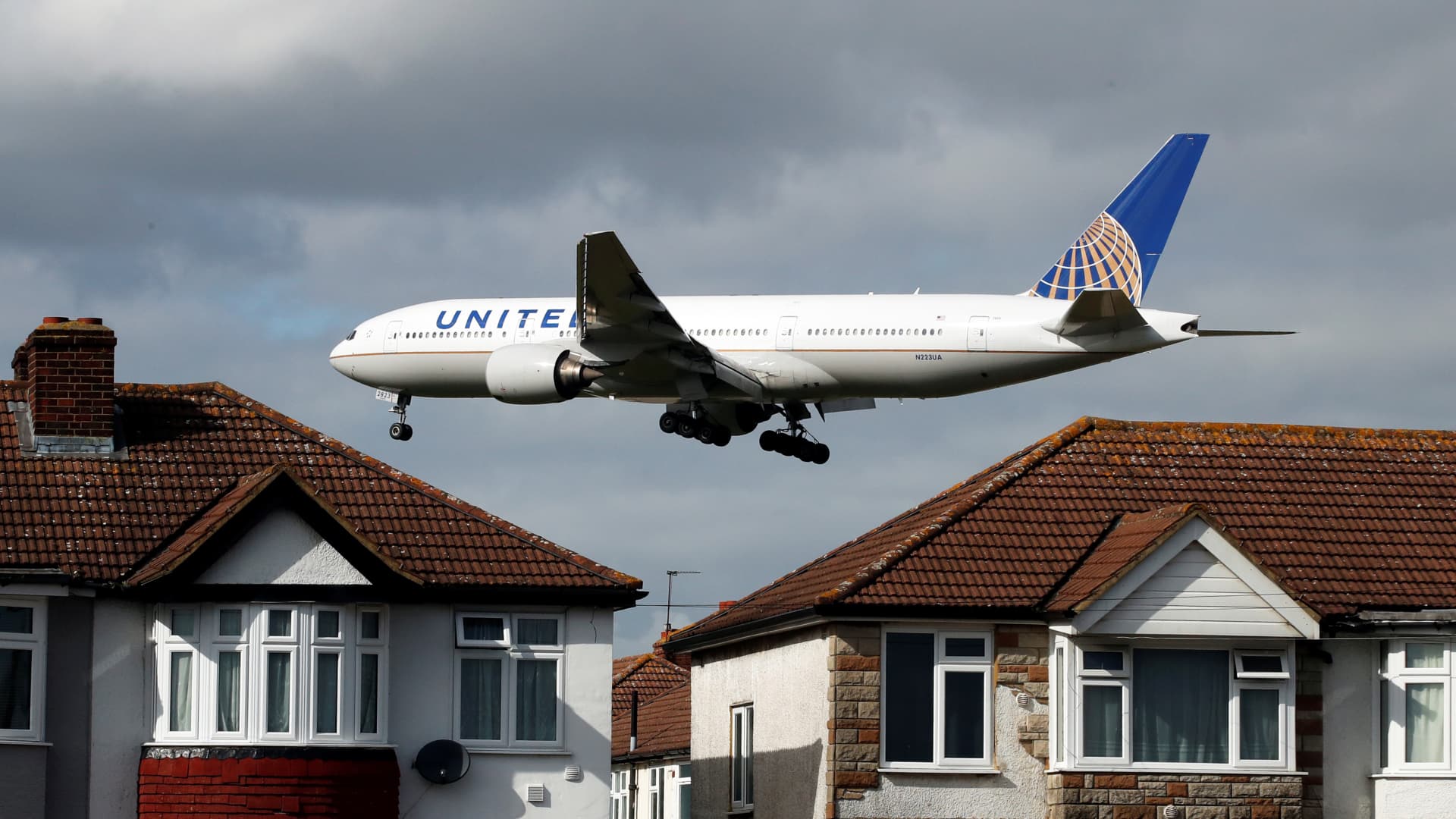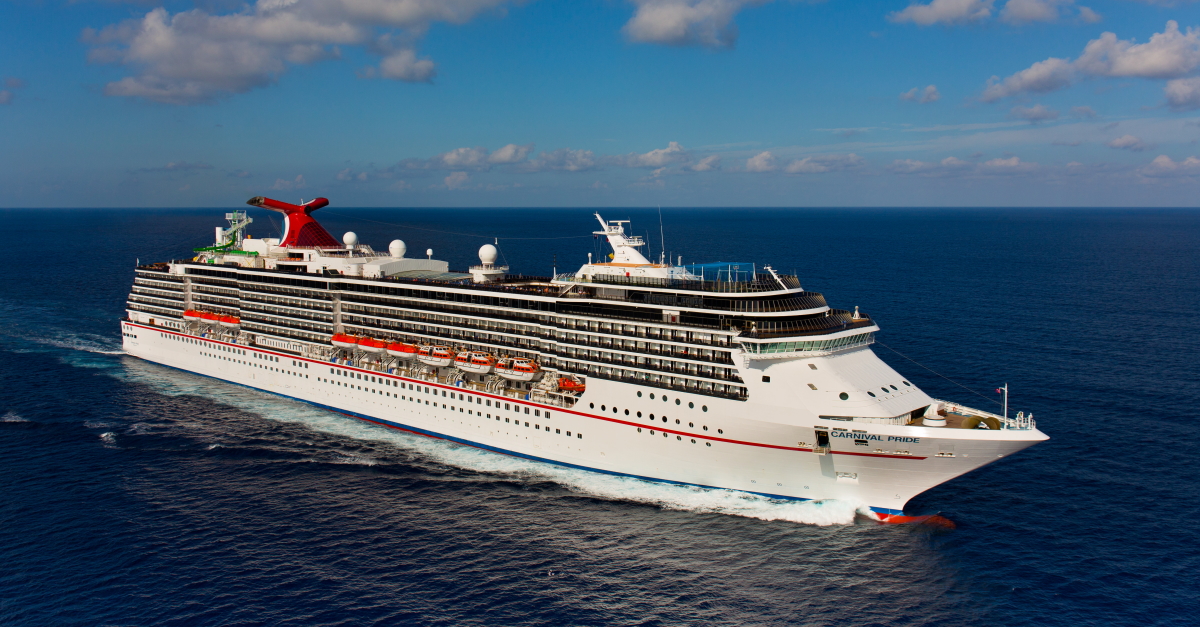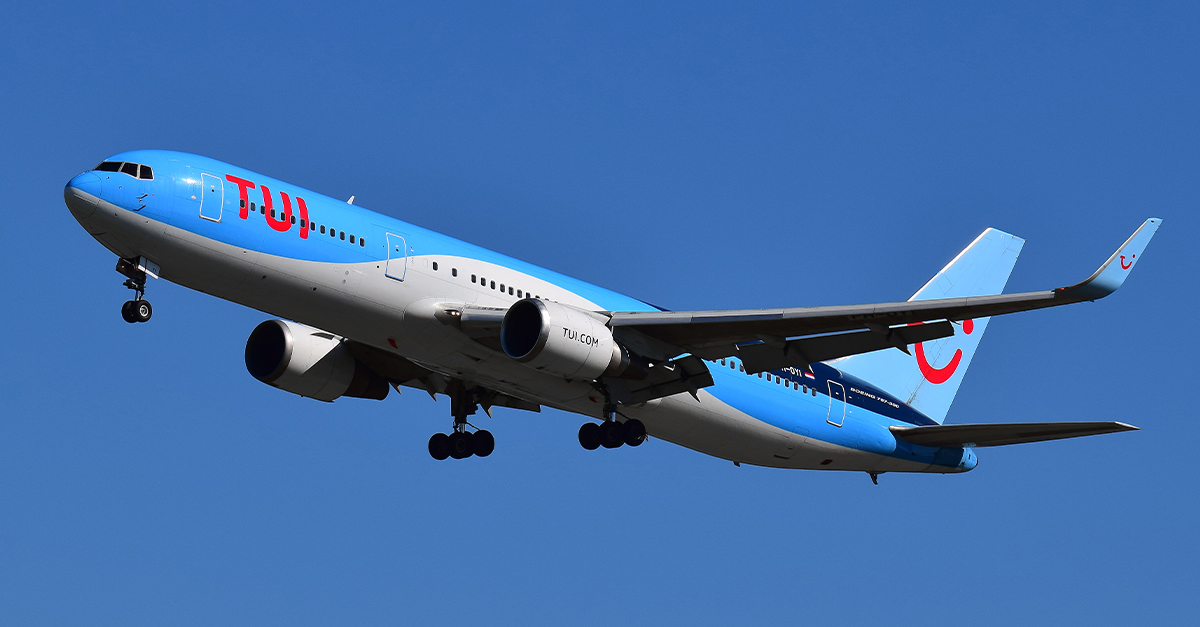United Airlines ramps up flights for European travel comeback
United plans to fly 25% more trans-Atlantic capacity this spring and summer over 2019.

A United Airlines passenger aircraft arrives over the top of residential houses to land at Heathrow Airport in west London, Britain, March 13, 2020.
Matthew Childs | Reuters
United Airlines says demand for trans-Atlantic travel is heating up, despite higher fuel prices and the Ukraine war.
The airline plans to fly 25% more across the Atlantic this peak spring and summer travel season compared with 2019, including new destinations it unveiled last fall such as Bergen, Norway; Amman, Jordan; and Portugal's Azores. United is adding new routes and frequencies, including service to London, Zurich, Munich, Milan and Nice, France.
The stronger demand "was something that we anticipated and it's something we're seeing results of," Patrick Quayle, United's senior vice president of international network and alliances, said on a call with reporters Monday.
United is ramping up its schedule as the airline faces several challenges: the longer-than-expected process to resume flying its 52 Pratt & Whitney-powered Boeing 777s after an engine failure last year, delivery delays of new Boeing Dreamliners, Russia's invasion of Ukraine and a surge in costs.
"We have not seen any softness in terms of demand," Quayle said of the carrier's easternmost European destinations, such as Germany or Croatia. But, he added, there might be some impact on demand for connections to cities farther east in countries like Poland and Romania that are served by United's partner Lufthansa.
Quayle also said United is logging "robust" demand for more expensive products like its Polaris business class and its premium economy class for trans-Atlantic flights. He also said that business travel across the Atlantic is returning.
The grounded 777s are on track to return in mid-May, and the airline isn't planning to ramp up capacity beyond its current schedule if they come back earlier. However, Quayle said the planes could be used for cargo flights, which have been a bright spot during the pandemic.

 Lynk
Lynk 































